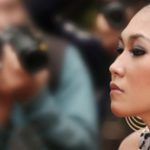EB1 Case Manager Training – Understanding PM-602-0005.1 – Exhibitions and Showcases
Exhibitions / Showcases

The client’s showcases or exhibitions must be artistic in nature.
Ok, let’s take a look at the Exhibitions and Showcases category. This is a very interesting category that can be and is interpreted a little bit differently by each USCIS officer. That can cause uncertainty for the case worker and client, which is why it is important to understand exactly what US Immigration will be look for in this category.
EB1 Case Manager / Understanding the PM
.
The main points in this category are: –
(1) Determine whether the work that was displayed is the alien’s work product
(a) Evidence that the work was created by the alien
(b) Images of the work on display
(c) Materials created for the purpose of promoting the beneficiary’s artistic works
(d) Sales records listing the beneficiary as the creator of the sold works (if applicable)
(2) Determine whether the venues (virtual or otherwise) where the alien’s work was displayed were artistic exhibitions or showcases
(a) Information about the venue
(b) Materials created to promote the artistic exhibition or showcase
(c) Letter inviting the alien to display his / her work at that venue
(d) Other exhibitions displayed at the venue
Not every category will apply to every client and every industry, and this category is one of those. The exhibitions and showcases category is written very narrowly and applies only to those individuals who are working in the arts. This is very, very important – it applies only to artistic work.
Let’s get into what evidence we need to provide to properly satisfy this category.
(1) Determine whether the work that was displayed is the alien’s work product
Hopefully by now you are seeing the pattern in the categories, and like with some of the others, this first section is focused on the alien and the work created by them. In developing your evidence, try to secure as many photos as possible and make sure that you are able to link the work directly to the client.
(a) Evidence that the work was created by the alien
This will depend a little bit on the type of showcase that you are providing evidence for, but it could include a poster for the event, or an announcement. It may be that we are able to show the work on display with a credit the alien, such as a piece of art in a museum. The point is, we need to prove that the art was created by the alien, and this could come in a number of different forms as noted above.
(b) Images of the work on display
This is important to this category because if we have images of the client’s art on display, whether it is a photograph in a museum or a singer performing on stage, this is proof that the client did display their art. Because this category is related specifically to exhibitions and showcases, we need to show that it was on display. Creating the art is not enough, we have to show it was displayed.
(c) Materials created for the purpose of promoting the beneficiary’s artistic works
We touched upon this evidence briefly in point (a), however, we definitely want to show promotional materials announcing that the client will be showing their work. This could be press, press releases, announcements or other documentary evidence about the event. Again, these materials should specifically name the client and the event.
(d) Sales records listing the beneficiary as the creator of the sold works (if applicable)
This category will not necessarily apply to every client as we don’t often see our clients selling their work at an event, however, it could apply to ticket sales when using this category for performance artists.
(2) Determine whether the venues (virtual or otherwise) where the alien’s work was displayed were artistic exhibitions or showcases

You will need to show that the venue regularly showcases artistic works.
Ok, so in the second part of this category, we want to focus on the event and venue where the art was displayed. Again, it cannot be emphasized enough that this category is focused on artistic works and artistic venues, so the place where the showcase has occurred should have a history and reputation for hosting artistic events.
(a) Information about the venue
This may be a museum, a performance venue or other place where the showcase is held. We have even seen US Embassies, religious buildings, and event spaces be used for artistic showcases. You should be able research to venue to show that they are focused on artistic or cultural events, and as such the showcases are certainly artistic in nature.
For example, the US Embassy might not necessarily be a venue dedicated solely to the arts like a photography museum is, but perhaps they have one artistic showcase each month, and there is a history of these showcases. In this case, we can show that the US Embassy is interested in promoting cultural events, and showcases an artist, thus establishing it as an artistic venue, despite the venue have other purposes, as well.
(b) Materials created to promote the artistic exhibition or showcase
In the previous section, we discuss press materials promoting the client’s work on display, and this section is a bit different. This is focused on the showcase itself. Perhaps a museum is hosting an event for top travel photographers, and our client is participating. There will be promotional materials for this event that may or may not mention the client. In this case, the materials can and should focus on the event.
Like with the other categories, get creative and look beyond press. You can look to online promotions, a newsletter from the organization, an invitation list for a private event, venue schedules and other items to show that the event is being promoted.
(c) Letter inviting the alien to display his / her work at that venue
This is an important piece of evidence because it will allow us to show US Immigration that our client is recognized in the field of endeavor and specifically sought out to put their art on display. Oftentimes such letters will also include evidence about the event and why our client is being invited.
If a client was not provided with a formal letter of invitation, we should certainly work to draft one to ensure that we have a full body of evidence to show US Immigration about the level at which our client is working.
(d) Other exhibitions displayed at the venue
As we touched upon, we need to show that the venue has a history of artistic exhibitions and showcases, so we will need to show what other exhibitions are show. We do not need to necessarily stay with the same art form, but as long as the events are artistic, we can make our case. For example, there is venue in Nashville called the Bluebird Café that is well-known for hosting the top talent in Nashville and the country music industry. This venue has a very long, documented history of showcasing top musical talent. In this case, we can show that the very best artists have performed there, proving that it is truly an artistic venue.
Training Videos
Example 1 – Museum Exhibitions
Part 1 – Part 2a – Part 2b – Part 3 – Part 4 – Part 5 – Part 6 – Part 7 – Part 8
Conclusion
This category is very narrow, and as long as you only use it when focusing on the arts, you can be successful in properly evidencing the category. As with many of the others, focus on what immigration is truly looking for – sometimes you will have evidence that fits each section but other times you have to think about what is being asked of you to determine what evidence you can develop to properly build the category.
Practical Exercise – Print 3 Sample Arguments
As you print these, you should keep them on hand as a reference. Not only will you see the evidence that is provided, but you will see what your argument writer will be putting together on behalf of the client.
Print the following case(s):
Manish Mamtani
Julien Decaillon
Melissa Gurel
As noted, it will be your responsibility to work with the client in determining if this category will apply to them. Because it is focused on the arts, it will not apply to every client. Once you have determined that it is the right category, you can then be sure to develop the right evidence.
Next, we will review the Leading / Critical Role category.

